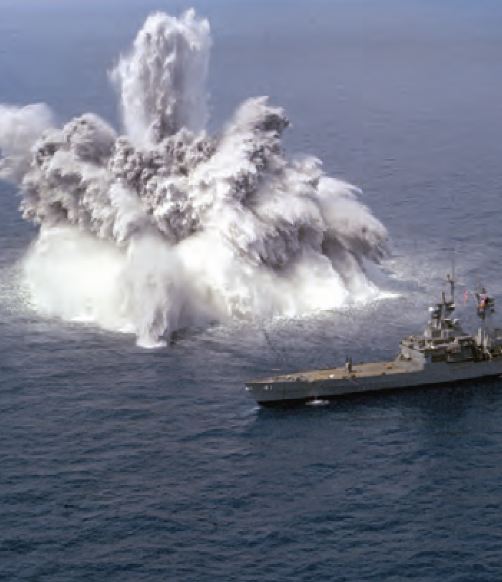On May 9, Visiting Professor Young Sik Shin from the Division of Ocean Systems Engineering conducted a series of underwater explosion experiments on a model ship in a quarry located in Dangjin, Chungcheongnam-do. The research team’s main interests were the whipping response, which can sink the vessel with relatively small forces utilizing resonance, and the high-speed bubble jet.
The team constructed a 350 kg aluminum model ship with a dimension of 8.4-by-0.68-by-0.41 m and attached sensors that measure acceleration, speed, pressure, and deformation. The amount of explosives and their distance from the ship were adjusted each time, and the responses from the sensors were recorded. The ship rocked heavily as the 0.2 kg explosive located 3 m below the water was detonated and as the frequency of the resulting bubbles matched the natural frequency of the vessel.

Resonance is defined as the increase in oscillation amplitude of a system when it is exposed to a periodic force whose frequency equals the natural frequency. An example demonstrating the effect is the collapse of the Tacoma Narrows Bridge in Washington State, for which the periodic frequency of wind blowing at 19 m/s coincided with the bridge’s natural structural frequency.
The bubble jet refers to the water column bursting from the surface as explosives drive drastic pressure fluctuations. The research team positioned the 1.5 kg explosive below 1.5 m following the calculation derived from the simulation that maximized damage to the vessel. The model ship shattered into pieces when the explosion produced a bubble jet that soared up to 30 m in the sky.
Professor Shin emphasized the importance of the experiment saying, “Developed countries, like the United States, always carry out underwater explosion experiments to enhance shock resistance and increase chance of survival when they design vessels or submarines. We too have to conduct these experiments because they do not share their results for security reasons.” A world-renowned scholar in underwater shock response, Professor Shin was appointed as Distinguished Professor in 2005 while serving in the Naval Postgraduate School.

